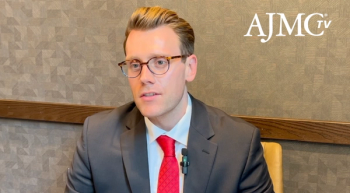
EMA and WHO "Tailor" the Biosimilar Development Process
The European Medicines Agency (EMA) reports on progress to create a smoother, less wasteful biosimilar development process; and the World Health Organization (WHO) revises its biosimilar development guidelines.
As experience with biosimilar development has accumulated, so has the understanding of how to characterize these therapeutic molecules so that their similarity with reference (originator) drugs can be accurately determined.
When biosimilars are approved by regulatory agencies, they are certified as being as safe and efficacious as the reference products. But technology has outpaced regulatory standards for evaluating biosimilar candidates, and now some of the tools for characterization are less sharp than others.
A case in point is protein mass spectrometry, which is 10 million times more sensitive than it was just a decade ago. Although clinical efficacy/safety trials in humans are often done to support approval applications for biosimilars, these studies are much more useful for gauging the efficacy and safety of new drugs vs old ones than verifying that one biologic (ie, a biosimilar) is highly similar to another.
In Europe and at the World Health Organization (WHO), efforts are underway to lay the groundwork for “tailoring” of biosimilar development programs so that the best technology can be used and the less-effective processes can be put aside.
In this work, the European Medicines Agency (EMA) is furthest along. The EMA just
Biosimilars, according to the Association for Accessible Medicines, can cost between $100 million to $200 million to develop.
Participants in the EMA pilot program reported modest satisfaction with the outcomes, and the EMA reported that it intended to continue with tailoring based on the value that was achieved.
“The tailored scientific advice offering for biosimilar development will be continued as part of regular scientific advice operations,” the EMA concluded.
“Tailored scientific advice was not limited to recommendations on the strategy proposed by the applicants but went further to provide specific advice on the analysis of the data presented,” the EMA wrote.
The pilot, which concluded in April 2020, enrolled 4 applicants, one of which requested guidance for 2 separate biosimilar development programs.
The typical kinds of scientific advice sought included:
- Discussions of the differences between biologics and their importance in choosing the right biosimilar development plan
- Possible requests for waivers of preclinical studies
- Appropriateness of scientific (nonclinical) methods for interpreting biosimilar testing results
- Understanding the relevance of minor differences in quality and how these would affect safety, efficacy, pharmacodynamics and pharmacokinetics
- Determining any evidence gaps than needed to be filled to complete a biosimilar application
The EMA found the program to be a learning experience. Previously, it assumed that the biosimilar development process followed a stepwise pattern that begins with analytical studies to determine functional and structural characteristics, followed by animal studies, clinical pharmacology, immunogenicity testing, and, lastly, clinical safety and efficacy trials. In fact, these processes may not fit the predescribed sequence, the EMA said.
“The stepwise approach foreseen in the regulatory guidelines is not necessarily employed in practice, where clinical studies are often conducted in parallel with generation of analytical comparability data,” the EMA said.
“Employing such tailored scientific advice requires adaptations in development by having a mature quality and in vitro nonclinical data package prior to the conduct of animal or clinical studies,” the agency added.
The lack of mature data from product samples was in fact a hindrance for the program, because it made it difficult to perform detailed reviews of quality data in order to provide helpful guidance to the biosimilar development companies on what types of nonclinical and clinical data needed to be developed further.
“The advice given had, in most instances, more impact on the generation of quality data per se and less impact on clinical data requirements than anticipated,” the EMA wrote.
Findings from the study may serve to inform similar intentions to develop a biosimilar development tailoring program at the FDA.
Similarly, the WHO is well along in a program to revise its biosimilar development guidelines to ensure they are in step with actual needs and technological developments.
The WHO does not approve drugs for marketing or distribution. It recommends medicines based on its judgement that the drugs have been appropriately developed and manufactured, and its guidelines for biosimilar development will give manufacturers assurance that if they follow the WHO’s recommended steps, their products will qualify for WHO endorsements.
WHO-recommended medicines are used by countries and health care institutions worldwide.
In a presentation at the Terrapinn Festival of Biologics 2021 in Basel, Switzerland, Marta Baldrighi, PhD, policy and science officer for Medicines for Europe, discussed the significance of the WHO revisions.
Biosimilar developers will benefit from this process, she said, by being able to follow a streamlined approach that allows them to use the most advanced analytical technologies for characterization of biosimilars while avoiding comparative clinical efficacy trials. In a recent interview with The Center for Biosimilars®, Baldrighi
The Center for Biosimilars® also covered the EMA's pilot
Newsletter
Stay ahead of policy, cost, and value—subscribe to AJMC for expert insights at the intersection of clinical care and health economics.





























































